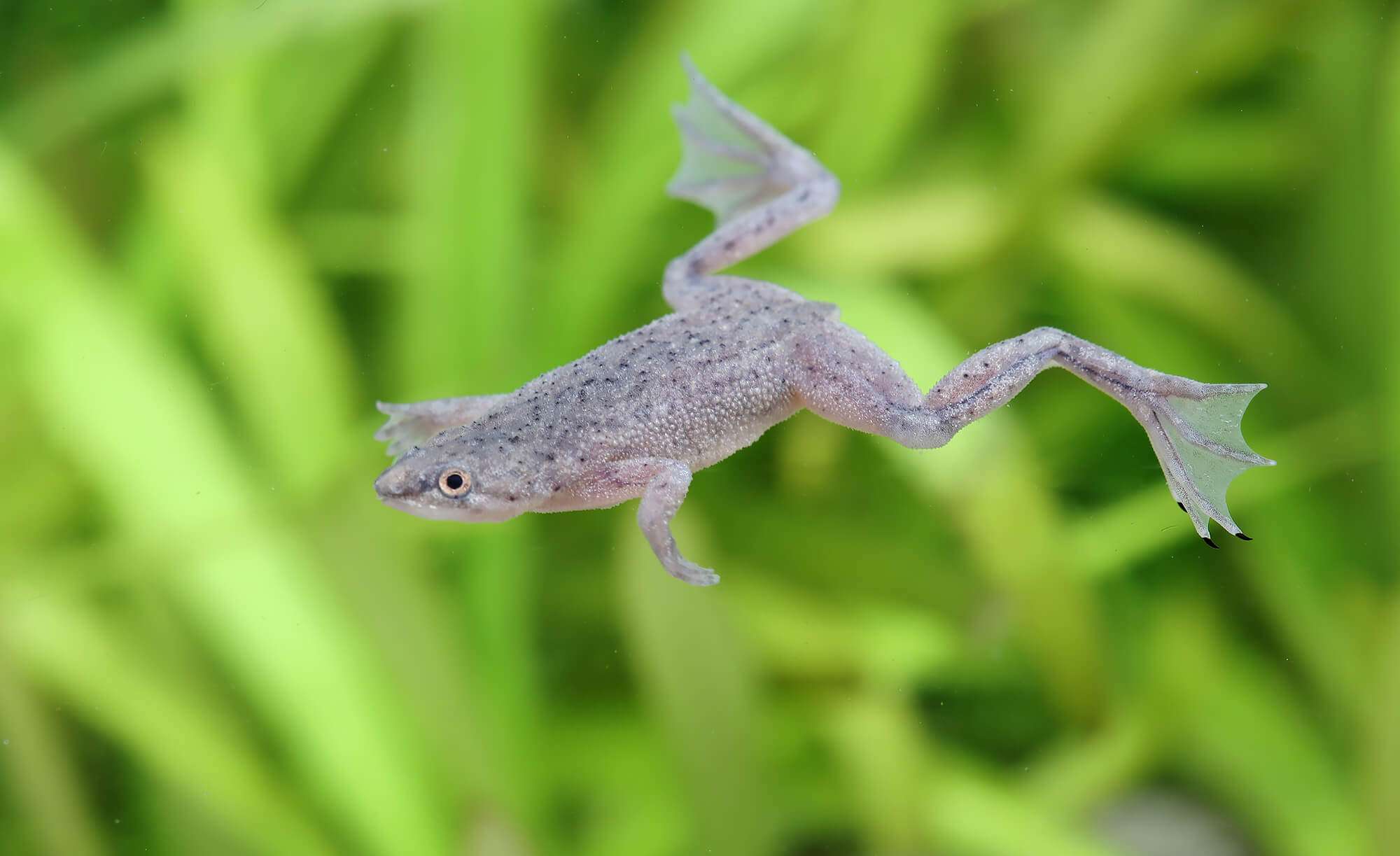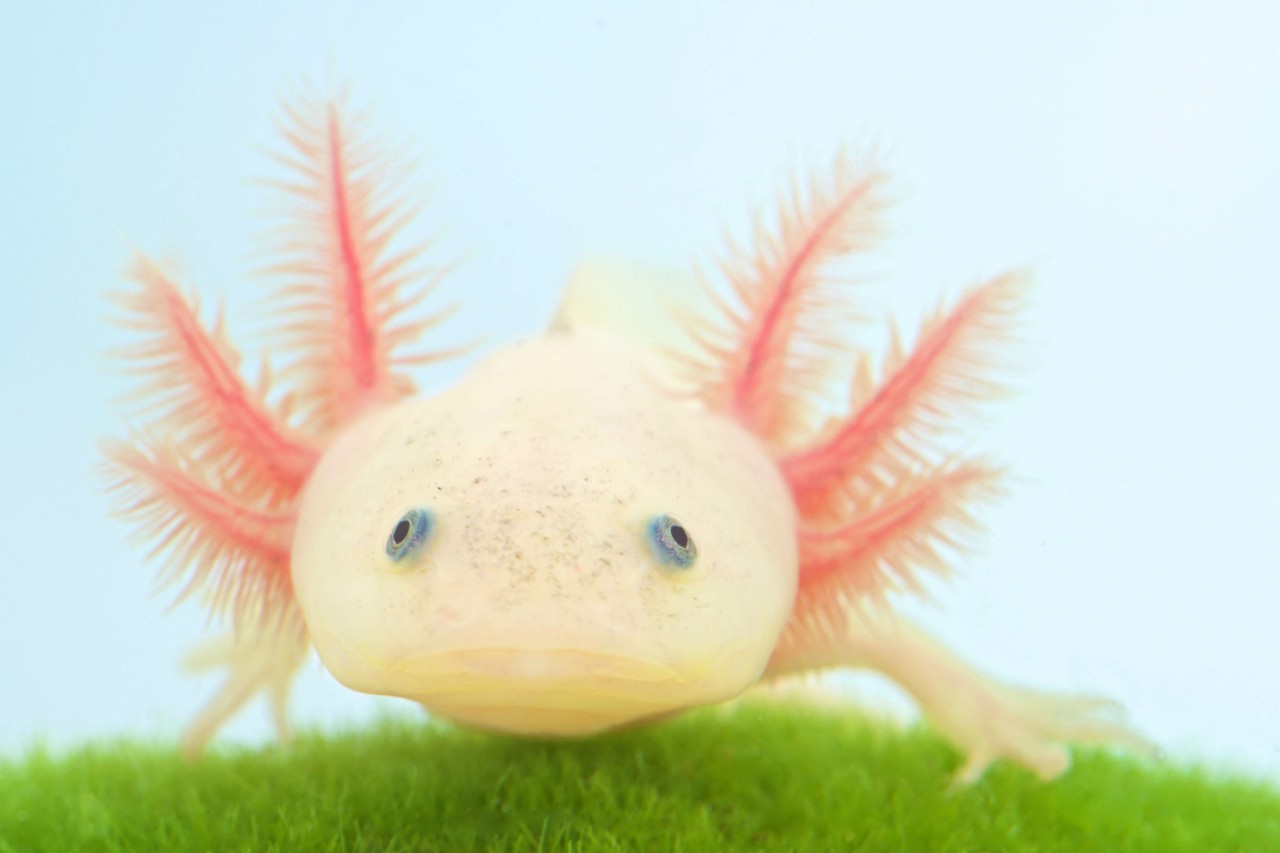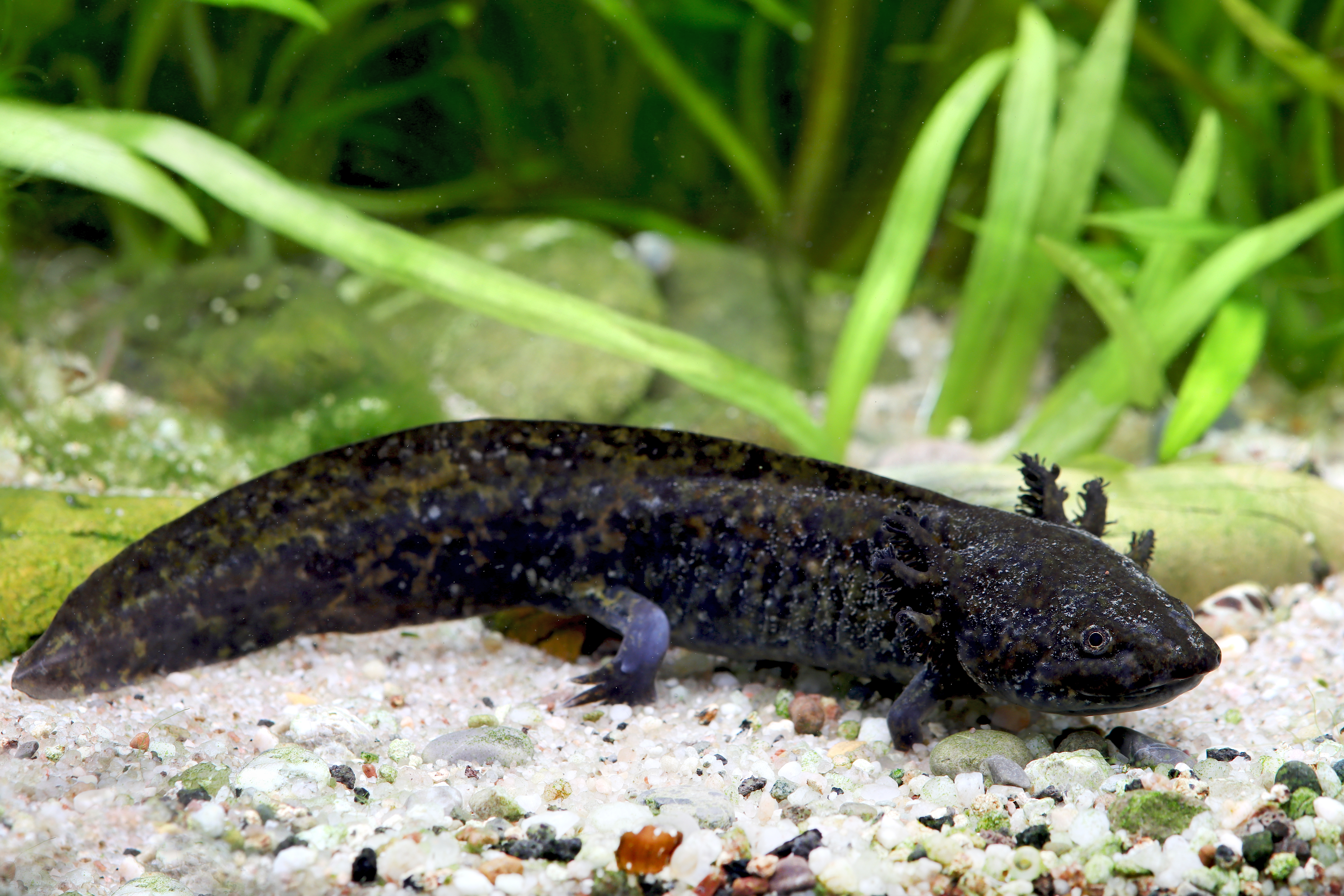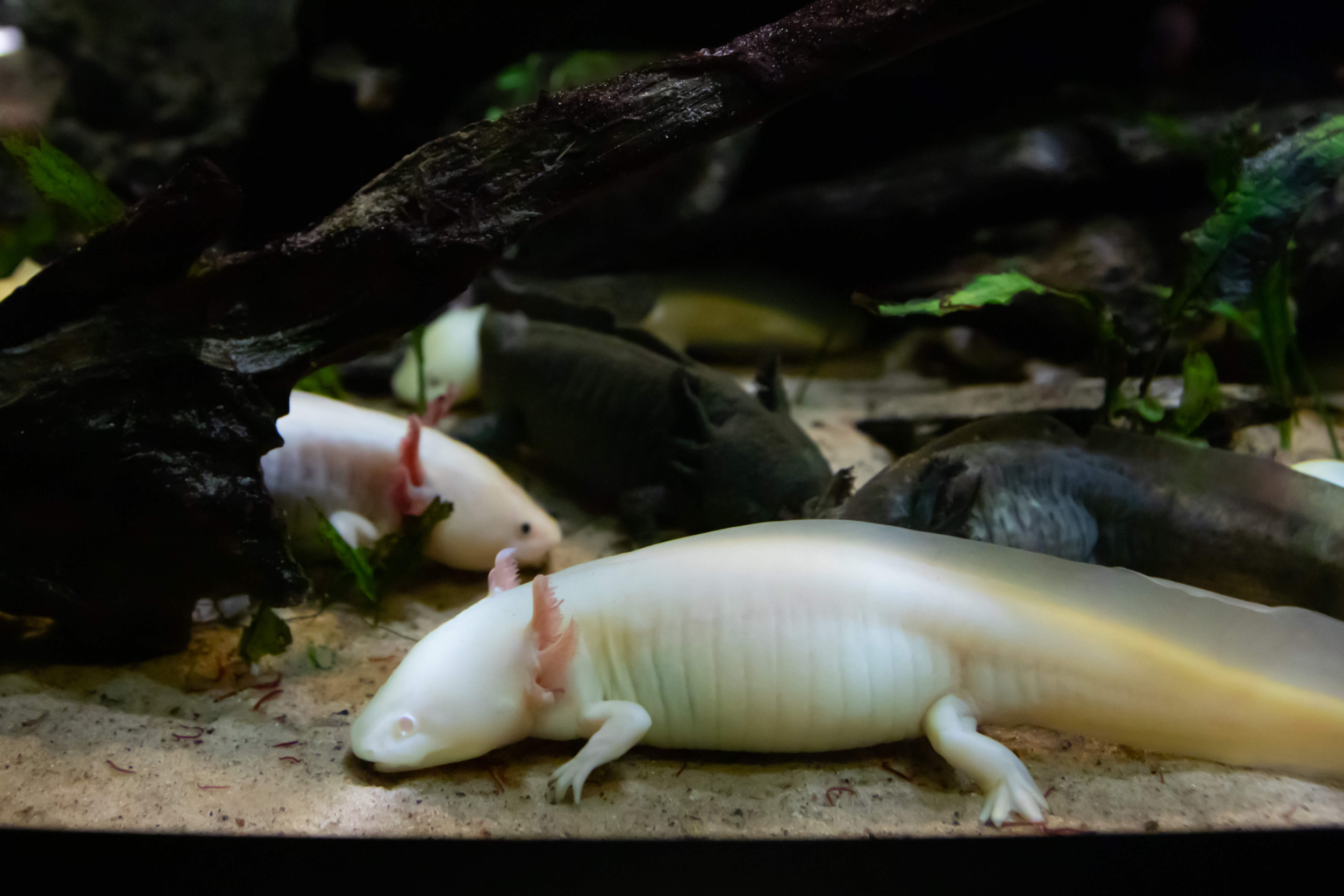The BD in the Axolotl Basin
In order for an aquarium to function at all, it relies on a multitude of different bacteria and microorganisms that perform countless important tasks that keep the small biotope in biological balance. There are also less useful bacteria, germs and parasites in the water, but not all of them are of great importance or become noticeable - as long as the aquarium inhabitants are healthy and lively and aquarium hygiene is otherwise important. Because then some pests do not even appear. Increased vigilance is always advisable, especially when something new enters the aquarium - from food to decorations, plants or animals. Especially if the latter are to provide a squeaky clean (and hopefully healthy) menu for the others.

What is BD?
The droplet fungus that causes chytrid mycosis in aquariums is thought to have originated on the African continent and primarily affects clawed frogs. It has also been detected in Australia. First infections in Europe were confirmed at the end of the '90s, so that the "European variant" is virtually ubiquitous and BD nowadays virtually hangs over the tanks like a sword of Damocles. At that time, the incidents were mainly found in terrariums, but in the meantime it has successfully "worked its way" into aqua-terrariums and regularly causes arrhythmias, especially among Axolotl fans.
Batrachochytrium dendrobatidis sounds almost unpronounceable and is therefore abbreviated in the professional and enthusiast circles simply with BD. It refers to an infectious disease that mainly affects amphibians and is caused by the so-called chytrid fungus. Not infrequently, such a disease ends with the death of the animals, which is why not only the recognition of the first symptoms can be life-saving - but also sets in motion a cascade of disinfection marathons.
Just as with our four-legged pets, amphibians and reptiles should also be appropriately documented. Although these pets cannot be vaccinated prophylactically, regular checking of one's own stock by means of swabs and tests can already prevent worse. Especially if animals are to be given away or socialized with others, the annual check by means of a PCR test via a veterinary laboratory can be life-saving. Although the European variant of the droplet fungus is currently considered predominant, the African variant is more lethal. It is possible that the European BD is ubiquitous (in the aquarium), but triggers the outbreak of the disease only by certain stressors, but in some places even with a correspondingly stable immune system of the animals does not necessarily lead to an outbreak of disease with potential fatal consequences.
BD has not yet reached epidemiological proportions in the wild, killing native amphibian species, except for a short-term regional population mortality in central Spain, where midwife toads and fire salamanders succumbed to the infection.
Exemplarily, the Corona crisis currently precedes us-so why should the general duty of care to prevent or contain a potential amphibious epidemic stop at the pool's edge?

What happens in the event of a BD?
Experience teaches that a battered immune system is particularly susceptible and responds to germs, especially in stressful situations. And these start ready with wrong water parameters over a rather timid water hygiene to other stress triggering factors. Compared to other diseases, the droplet fungus has a frighteningly high "hit rate", because in some places it attacks even obviously healthy animals. It is precisely this phenomenon that explains the demonization of BD among Lotl friends.
Chytrid fungi exist in more than 3000 variants, which are mainly parasites of algae or plants and can be entered into a system in this way. In purely theoretical terms, however, the fungal spores can adhere to just about any material and are more or less water-bound. Especially UV radiation and dryness cause them to die, but some species are more resistant. Others are also found on invertebrates such as snails and mussels or even shrimps, which are not affected by the fungus. However, if these animals are fed, transmission is very possible.

The zoospores of the chytrid fungus are mobile and spread through skin or water contact. The infective zoospores are freely mobile thanks to their flagella and have a size of about 3-5 μm. They are therefore not visible to the naked eye. Once they have found a host, they bore into its horny keratin layer, where they subsequently develop and multiply. In places, they are also found in mucous membranes. Depending on the variant, the chytrid fungus is extremely prolific, especially at temperatures around 4-28 °C, and its preferred pH value is between 6-7-all values with which aquariums are also maintained.
For the sake of completeness, it should be mentioned that German drinking water systems are almost never sterilized. The reproduction of Batrachochytrium dendrobatidis could therefore, in theory, take place even there as well as in the wastewater. However, if replacement water from amphibian aquaria were heated to at least 60 °C prior to disposal, active prophylaxis could be used to depress the potential epidemiological relevance. However, since these aquaria usually have a larger volume, the procedure is almost impossible to apply in practice. However, an alternative could be an extreme lowering of the pH value, as the BD reacts extremely sensitively, or disinfection with benzalkonium chloride. Nevertheless, the further environmental impact of such procedures should be considered.
The clinical symptoms of an infection with BD are basically rather specific and therefore often cannot be predicted from the beginning, which is why a discussion with a terrarium expert or veterinarian is recommended. Infected animals often show skin discolorations and pigmentations, sometimes also strong skin hornifications, predominantly at lying places. In addition, they usually behave apathetically or exhibit convulsions, and they often refuse to eat. It is not uncommon for secondary infections to occur, which the BD has encouraged in the first place.

How is BD treated?
If the animals show the first signs of infection, swift action is advised and, if possible, a veterinarian should be consulted, who will prescribe a 10-minute antimycotic bath for the animals. But also a Lamisil bath or in chloramphenicol can provide first aid. Especially itraconazole, dissolved in water, is extremely promising in the treatment of affected amphibians. The drug actually originates from human medicine and is used for certain mycoses. Itrafungol, which is usually used against skin fungi in cats, can also be used to "de-fungalize" living mollusks, dwarf shrimps and aquatic plants.
In addition, the rest of the aquarium equipment should also be thoroughly disinfected and, if possible, boiled to prevent re-infection. It is advantageous to set up the tank anew and to disinfect it thoroughly to the last corner beforehand. The filter media should also be completely replaced after disinfecting the filter. Alcohol or ethanol with at least 70% is suitable for this purpose. In order to prevent the fungal spores from spreading further unhindered in the environment, it would make sense not to simply drain the aquarium water, but to heat it to at least 60 degrees beforehand and disinfect it with benzalkonium chloride.
In addition to technology and aquarium, also feeding cables, cover and possibly the lighting should not be left out. The easiest way is to replace plants and substrate completely or to disinfect very thoroughly into every crack. Virkon S 1 % is suitable for this purpose. After the treatment of the animals the aquarium should be kept well in the eye, since it goes through a new run-in phase, with bacteria preparations one can support this time however well. It also makes sense to prophylactically use preparations containing humic acid, such as sea almond leaves or alder cones, but also liquid humic acids, in order to benefit from an antifungal effect.
Is it possible to test for BD?
If you want to introduce new animals or even give some away, it makes sense to test for BD. This is a specific RealTime PCR test, which is evaluated by a swab sample from the animal in a veterinary laboratory. During this time, at least the new pet should be quarantined prophylactically before it is socialized. However, it is also advisable as a prudent owner to have their animals tested for BD once a year. The PCR test also compares the respective variant with already known ones. Also in case of an unexplained death of an animal it makes sense to have a profile of the amphibian skin made, which provides corresponding bacteriological or mycological information.
Prophylaxis is half the battle
As mentioned, it is theoretically very easy to encourage a BD outbreak in the aquarium, especially if basic points are not considered in the care of the amphibian tank. A quarantine tank for new additions, amphibious or invertebrate in nature is therefore advisable in any case. However, if the tank with clawed frogs, axolotls or other animals is cared for attentively and with caution, horrors such as BD can be faced calmly, especially if the background knowledge is available on what to do if the worst comes to the worst.

Huminsäure und Bakterienpräparate beim Axolotl ein noch go
Euer Beitrag ist fachlich fundiert und gut geschrieben.
Jedoch haben Huminsäuren (egal ob natürlich oder aus der Flasche) nichts im Axolotl-Becken zu suchen. Diese greifen die Hautbarriere der Tiere an und machensie so empfindlicher gegen Krankheiten. Daher bitte Finger weg von Seemandelbaumblatt, Erlenzapfen und so weiter.
Ebenso von Bakterienstartern. Die darin enthaltenen Emulgatoren, Chelate usw. schaden dem Axolotl ebenfalls.